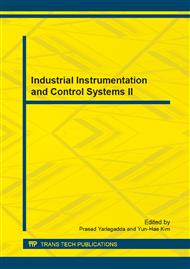p.944
p.949
p.953
p.960
p.964
p.968
p.973
p.978
p.982
Swarm Cohesion Stability Using a Fuzzy Logic Based Attractive/Repulsive Function
Abstract:
In this study, a novel class of swarm robots with fuzzy logic based attractive/repulsive force function is presented. This kind of attractive/repulsive function seems to be more general and natural than other explicit mathematical formulations. It shows that the members of swarm robot will asymptotically form a cohesive cluster in predicted bounded region. Simulation example is demonstrated to validate the theoretical results.
Info:
Periodical:
Pages:
964-967
Citation:
Online since:
July 2013
Authors:
Price:
Сopyright:
© 2013 Trans Tech Publications Ltd. All Rights Reserved
Share:
Citation:


